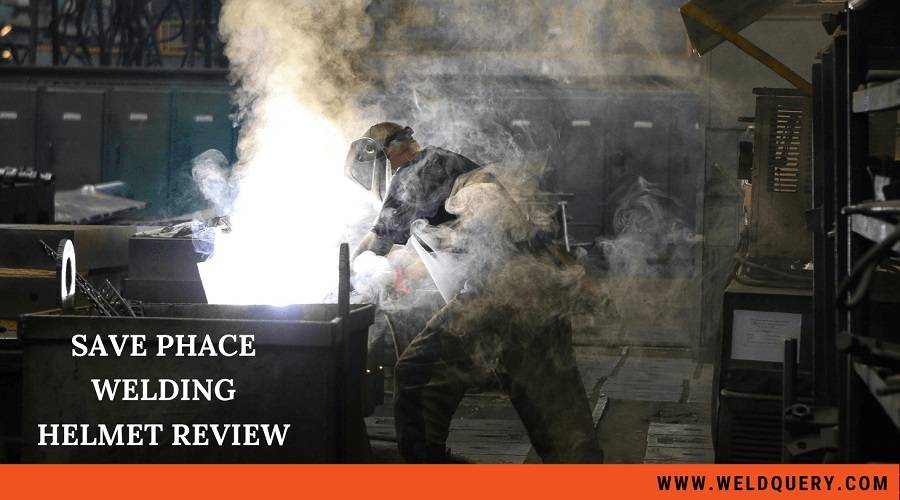Miller 211 and 212 have the same appearance since they are from the same manufacturer. Also, they function the same, and many welders prefer purchasing them according to their taste. Despite having the same appearance and performing the same, the machines have some differences.
The differences are many. For instance, they require different amperages; 211 require power ranging from 115 to 150 amperes and the 212 range from 30 to 210 amperes. The welders or hobbyists may use the machine either in their houses or in the welding places.
Luckily, the article gives a quick comparison table between the two welding machines to help the welder understand faster. It also describes their similarities and differences. Moreover, the article shows the pros and cons of each device, the buying guide, and the FAQs.
Contents
A quick comparison table between Miller 211 and miller 212
| Comparison | Miller 211 | Miller 212 |
| Power | 115 to 150 amperes | 30 to 210 amperes |
| Duty cycle | 40% at 150 amperes | 60% at 160 amperes |
| Voltage | 120 and 240 voltages | 208 and 230 voltages |
| Welding thickness | Melts 24ga that is 3/8′′ steel and 18ga that is 3/8′′ aluminum | Melts thicker metals are hence suitable for large industries. |
Quick Differences between Miller 211 vs. 212
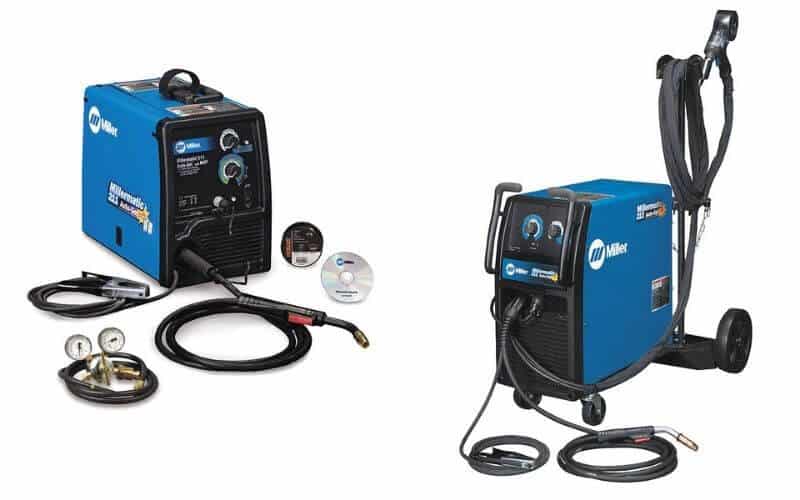
- Thickness
The miller 211 welders can melt 24ga, that is 3/8′′ steel, and 18ga, that is 3/8′′ aluminum with a 240 voltage input. The miller 212 welds thicker materials, therefore, suitable for larger industries.
- Power
Because the miller 211 is dual-voltage, it needs two power sources with both 120 Voltage and 240 Voltage power sources. Since you can utilize your home’s current source or hook into a generator UPS, this is quite beneficial if you believe you’ll be welding in various conditions. The miller 211 has been constructed so that switching between the two types is a breeze.
Switch the ring on the back of the connector, push it off, and exchange it with another. Such a process does not require any equipment, and you can complete it in a matter of moments. In one cycle, the welder can melt metals with 120 voltages current input.
For the miller 212 welding device, the power requirements are different. The amperes range from 200 voltages, 208 voltages, and 230 voltages. The amperes rating is approximately 60 Hz and ranges from 30 amperes to 210 amperes.
- Duty cycle
At 150 amperes, the duty cycle is 40%. A ‘Fan-On-Demand’ power source cooling technology is included in the miller 211, which goes on just when the welder requires cooling. Such a process is taken to minimize the device’s waste current and sound.
In contrast with the miller 211, the miller 212 has a different duty cycle. The duty cycle for 160 amperes is around 60%, and for 210 amperes, the duty cycle is 30%. The duty cycle depends on the current the welding machine is using.
- MultipurposeMultipurpose voltage
Miller 211 welding machine also has multi-voltage functioning. The feature allows the welder to connect and use the device easily, unlike the miller 212 welding machine. Also, the machine comes with a fan essential in cooling the machine and protecting it from any form of damage, decreasing the power wasted when welding.
The Miller 212 is a multi-voltage welder that works with any Direct Current circuit, including 240 Volts, 220 Volts, 120 Volts, 115 Volts, 230 Volts, and 110 Volts. You may use it everywhere because of its range of input voltage adaptability, from simple domestic power circuits to the most advanced technological facilities. It is certainly the ideal instrument for the welder, whether you are a newbie DIY enthusiast or an accomplished welding specialist.
Advanced features
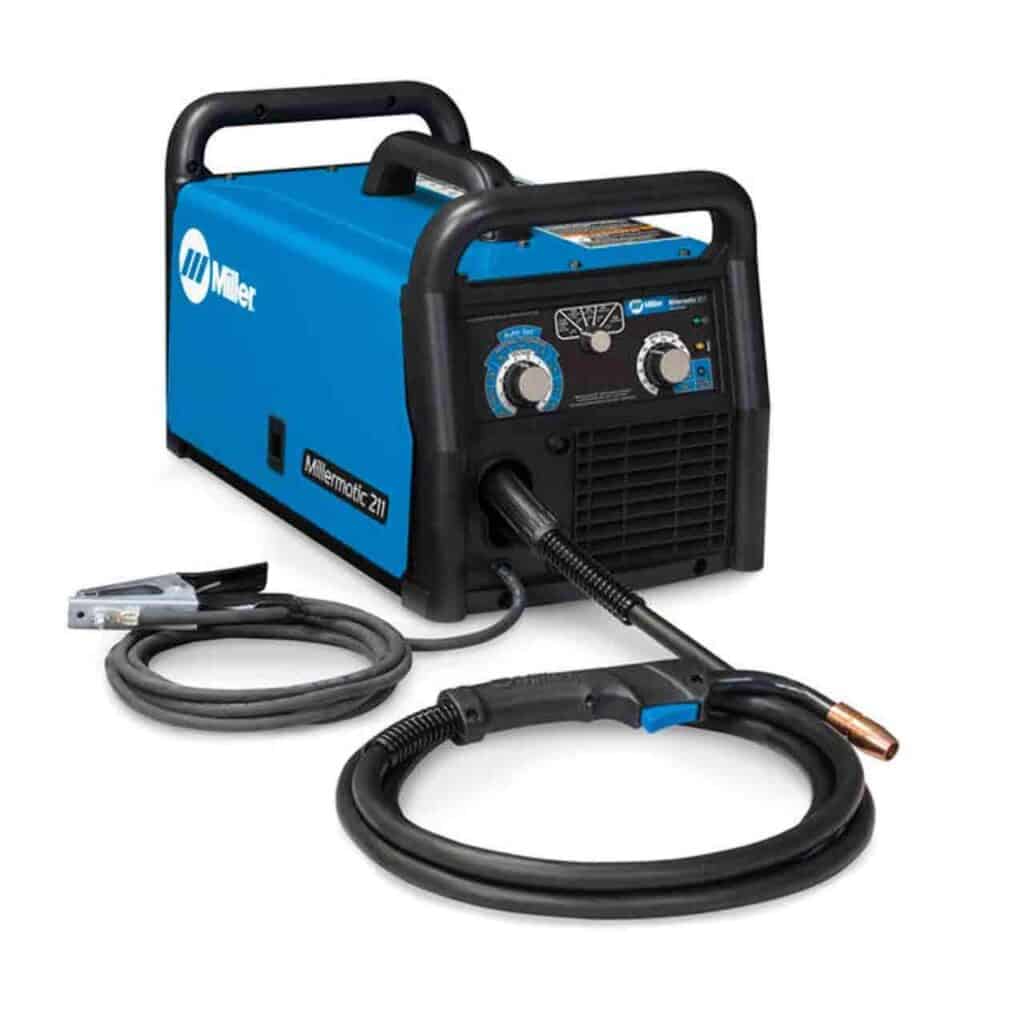
miller 211 has advanced features such as;
- Automatic Detection of Weapons
The system identifies whether a MIG or spool gun is fitted autonomously. As a result, there is no waste of time or inconvenience in needing to utilize a switch. Also, it has a consistent drive system equipped with a newly developed driving system made of cast aluminum rather than low-quality plastic. As a result, it’s tough enough to take a beating. It also includes an inclined structure with a regulated tension knob, ensuring that the wire is fed smoothly and uniformly.
- Starting on the right foot
Miller 211’s patented start technology is used here. It guarantees a smooth, spatter-free start. It has the cleanest weld start of any compact MIG welder on the market.
- The mechanism for Optimum Ventilation
The Fan-On-Demand mechanism helps in saving money on electricity while also extending the device’s longevity. It only turns on the fan when it’s necessary, as the name says. As a response, ambient sound decreases, energy is saved, and pollutants are drawn into the device during the process.
For miller 212, its advanced features include the following;
- Flexibility and mobility
The Miller 212 is extremely user-friendly, making it ideal for both beginners and expert welders. It weighs roughly 38 pounds, making it conveniently transportable and suitable for welding at remote locations. If you want to operate the welder in a rural area, you can utilize generators to run it, but the generator must be quite powerful.
Similarities for both miller 211 and miller 212
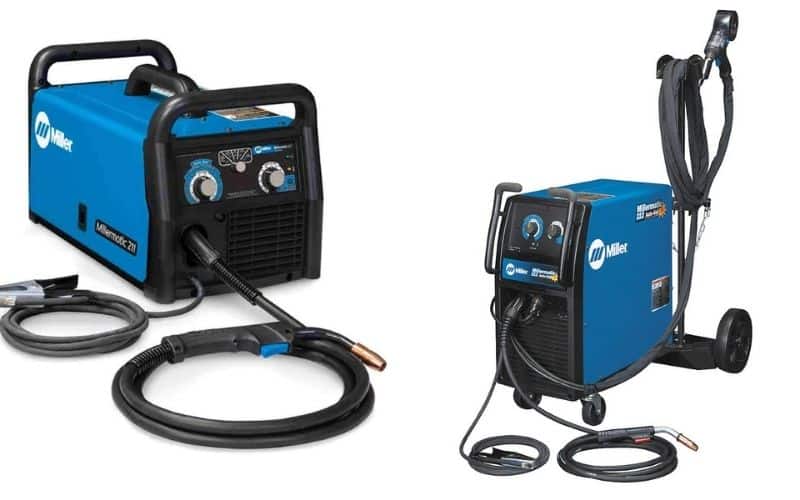
- Power requirements
The Miller 211 and 212 have nearly comparable power, while the 212’s duty cycle is significantly better. Apart from that, the main distinction between the two, in my opinion, is the firearms.
- Spoolmate feature
you can use the Spoolmate 100 in miller 211, whereas the Spoolmate 200 in miller 212. Such a feature makes the two welding machines almost similar. Also, the two welding machines are from the same manufacturer; thus, most spare parts are applicable for both devices.
Pros Cons of Miller 211 over miller 212
Pros Cons of miller 212 over miller 211
Buying guide for miller products
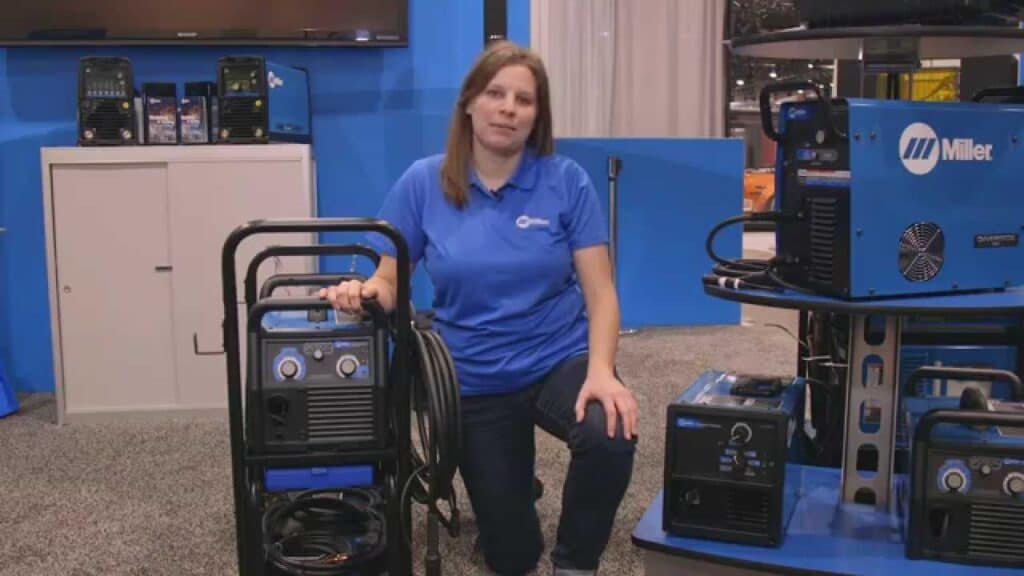
- cycles of duty
The duty cycle of amperage indicates the time the welder can weld continuously for a couple of minutes, around ten minutes before it has to cool down. For instance, a miller welding machine with a 60 percent duty cycle at about 250 to 300 amperes and 32 voltages of soldering output is essential for six minutes out of ten minutes at 300 amps and 32 volts.
It’s crucial to compare the current and voltage numbers that constitute the load when examining two distinct power supply sources. When contemplating a Stick machine’s duty cycle, remember that almost all Stick welding rods are consumable within two minutes.
- Power from a generator
You might require a motor welder or a generator out in the outdoors to provide power ranging from 120 volts or 240 volts alternating current ability to operate equipment and lights, or direct current of 12 volts to refill automobile cells and jump-start motors. Miller welding machines or generators have many amperes; larger machines even have generator alternative sets that increase 10 to 20 kilowatts of electricity.
- Portability
Is it possible to bring the work to the machine, or must it travel to the job? Types of portability are on the product detail pages. Therefore, choose a device that is easily movable from one place to another. Also, ensure the machine comes with a full package.
- the metal’s nature
Welding is usually in three different parts. The common being carbon steel because it is usable with many welding machines and can withstand high temperatures. Stainless steel is the second and applicable with welding machines and doesn’t require as much energy to function as carbon steel. If you’re working with aluminum, you’ll need more advanced welding equipment, such as a MIG machine. For the aluminum weld, you can alternatively utilize a high-end TIG machine. Because each element performs differently, it’s advisable to get a hold of the metal you want to combine before deciding on a welding machine.
You might be interested to read our another comprehensive article of;
Miller 180 Vs 211- Product Comparison
Miller 211 Vs. Miller 215- Which Is Better?
Frequently asked questions:
- Which is the most recommended between miller 211 and miller 212?
The miller 211 is a great transportable dual-voltage device. The miller 211 is unbeatable for that type of equipment, especially plus the cost. With a greater duty cycle, a wire spool size, a less weight-duty wire drive system, a stronger welding gun, and a rolling chassis with a bottle rack included, the miller 212 is good to shop equipment. For shop-only equipment that runs on 220 voltages power, the miller 212 is the preferable option.
Conclusion
Yes, both miller 211 and miller 212 have differences. The article summarizes the differences, including a quick comparison table. Also, it will help the welders understand the similarities of both metals, including the pros and cons of each. Therefore, it is advisable to read the article above before choosing the welding machine.
Finally, consider several factors such as power requirements, welding rod, and others before making an order or buying the machine. Further, maintain the appliances by following the manufacturer’s instructions. If the device is applicable in large areas, consider using the recommended machine and vice versa.

